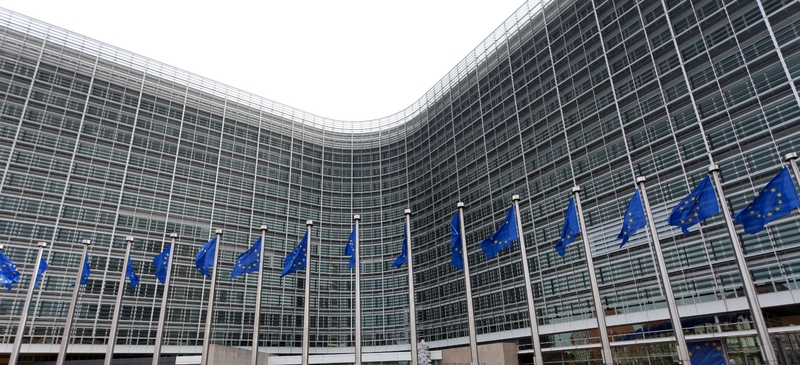
The Commission's economic forecasts are still too complacent
By Simon Tilford
On the face of it, it appears churlish to accuse the Commission of complacency when it is forecasting no growth in the eurozone economy in 2009 and a deep recession in the UK. But the Commission has a tendency to be slow to downgrade its forecasts and its latest forecasting round is no exception. The Commission’s forecasts of economic stagnation next year – 0.2 per cent in the EU and 0.1 per cent in eurozone – already looks out of date. It is hard to conceive how either the EU or the eurozone will escape deep recessions in 2009. The indications of an unprecedented slump in economic activity are multiplying all the time.
Of the EU-15 economies, the Commission is probably right to be most pessimistic about Britain and Ireland, forecasting economic contractions of 1 per cent and 0.9 per cent respectively in 2009. There is no doubt that these two economies will be among the hardest hit within the EU. Both are experiencing huge falls in house prices, and their credit markets have effectively seized up. British consumers are easily the most indebted in the EU. The UK’s household savings rate was actually negative in the first half of 2008. If it were to rise back to its long-term average of 8 per cent over the next three years, the British economy would experience a deep slump.
But it is the Commission’s forecasts for a number of other member-states that stand out. Its forecasts for Germany and Spain look least credible, at zero and -0.2 in 2009 respectively. Germany’s economic strategy in recent years has been based almost entirely on export success combined with high domestic savings rates and low consumption. This leaves it hugely vulnerable to the unfolding economic crisis. The IMF expects world trade volumes to rise by just 2.1 per cent in 2009 and trade between the advanced economies to decline by 0.1 per cent. After appearing to hold up relatively well over the early part of 2009, German industrial orders are now in free-fall (falling 8 per cent in October), as most of the country’s key export markets are either in recession, or growing much less rapidly. Business expectations have fallen to their lowest levels since 1992. Germany’s specialisation in capital goods, chemicals and premium cars stood the country in good stead during the cyclical upturn in 2004-06, but with demand for all three in reverse, Germany has become very vulnerable.
Nor will the domestic economy come to the rescue. Germany has avoided the house price boom entirely and German households are not that indebted. But a recovery in domestic consumption has proved elusive. After falling steadily for over two years, unemployment is about to start rising, which will no doubt prompt Germany’s risk-averse households to further increase the proportion of their incomes that they save.
The EU’s forecast for Spain is also too sanguine. Spanish unemployment is rising very rapidly, industrial production is falling (by 8.8% in October), the pace of decline in house prices is accelerating and demand for Spanish exports is under severe pressure. The collapse in construction sector activity will impose a severe drag on the Spanish economy next year. In the circumstances, it is hard to see how the decline in output could be held down to as little as 0.2 per cent.
The Commission expects zero growth in both Italy and France. Italy and France have not experienced house price booms of the scale seen in Spain or the UK, but in both countries industrial production is under huge pressure, as a result of collapse in consumer sentiment and a big fall in export orders. Consumer and business surveys point clearly to recessions next year, rather than economic stagnation.
The IMF’s forecasts look more realistic than those of the Commission. It is forecasting a decline in EU output of 0.2 per cent and 0.5 per cent for the eurozone. This means recessions in Germany (0.8 per cent), Spain (0.7 per cent) and France and Italy (0.5 per cent and 0.6 per cent respectively.) The IMF was heavily criticised earlier in the year for allegedly being too pessimistic about Europe’s economy’s outlook, but it has been vindicated as the European economy slowed dramatically even before the intensification of the financial crisis in September.
The aggressive cuts in interest rates by the ECB and the Bank of England (BoE) over the last six weeks have come too late to have that much impact on next year’s economic growth. Interest rate reductions normally work with a lag of about 18 months. Some governments are at the limits of their borrowing capacity and can do little to directly stimulate economic activity by cutting taxes or boosting expenditure. But others have scope to offset the severity of the downturn. The EU urgently needs member-states that have run-up huge current account surpluses and which have strong fiscal positions to boost demand. Germany and the Netherlands are the obvious candidates. Their current account surpluses are not sustainable in the present climate, and they need to rebalance their economies. Germany, in particular, requires a far more significant stimulus package than the one put together by the German government, which will have a marginal impact. If the governments of big surplus countries fail to take concerted action, their surplus savings will condemn themselves and Europe as a whole to an even deeper recession.
Simon Tilford is chief economist at the Centre for European Reform
